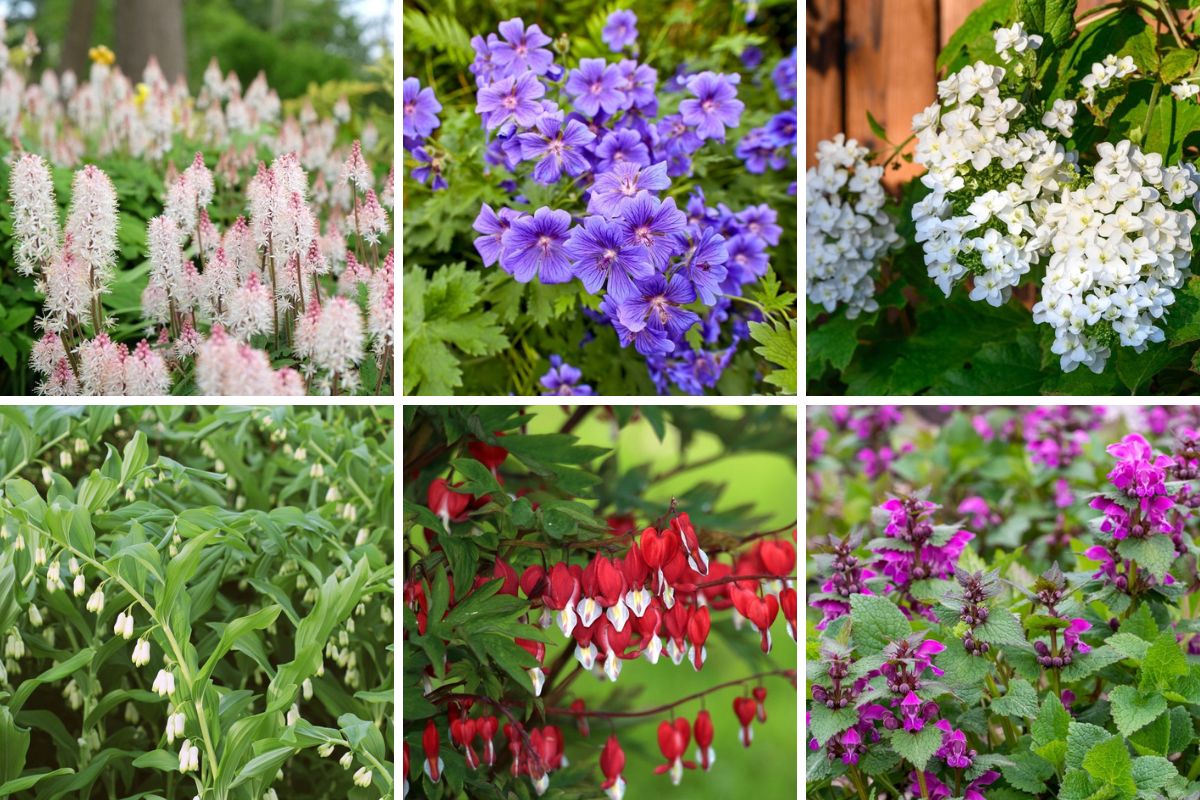It’s true that hostas get along with many shade-loving plants. Still, picking the right pairing for your garden is an art.
For one, solid green hostas usually need bursts of color or interesting textures. On the other hand, blue varieties do well with coral bells, baptisias, and spotted dead nettles. Meanwhile, a shade garden with an edgy aesthetic could use some bugleweed or mondo grass.
In this list, we dive deeper into the top 15 hostas companion plants and how to make the most of each pairing.
1. Bleeding Heart
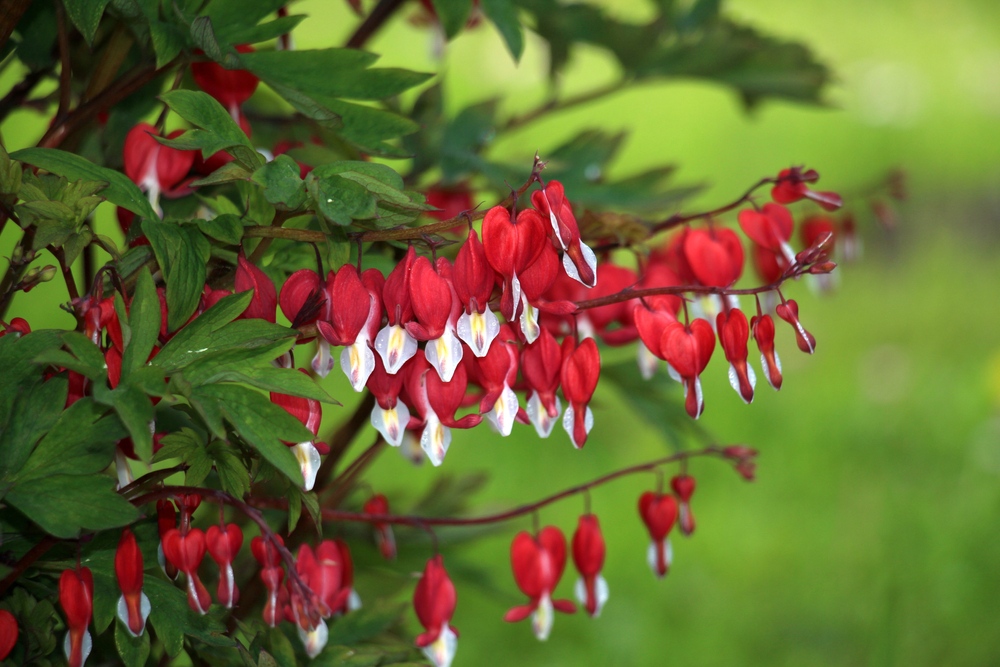
White puffy, dangling blossoms, the bleeding heart is just what large hosta leaves need to pop.
Many people would go for the white cultivars, but you can also find the plant in pink and red. In most cases, you can expect the plant to grow to 1–3 feet.
This spring-flowering perennial handles shade and humidity like a champ and shares the hostas’ love of rich, acidic soil.
The foliage tends to go yellow in warm weather, but that’s not a major concern. In fact, most varieties are hardy in zones 3–9.
2. Hellebore
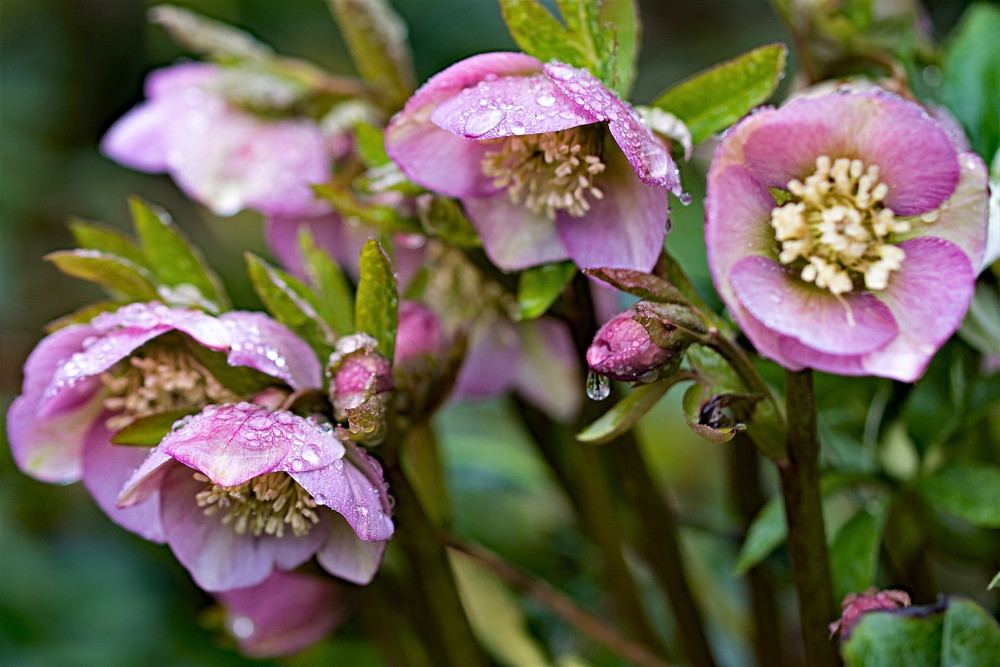
Hellebores (lenten rose) is a herbaceous perennial that forms low-lying clumps. This setup works best if your hostas are on raised mounds. Lenten roses won’t mind shade as long as they’re not exposed to strong winds—hostas don’t like winds, either.
In zones 3–9, hellebores produce rose-like flowers that come in white, yellow, pink, and purple. If you’re growing from seed packets, odds are, you’ll get a mix.
That said, hellebores prefer alkaline, while hostas lean towards acidic. So, keeping the soil neutral should be a good compromise.
3. Oakleaf Hydrangea
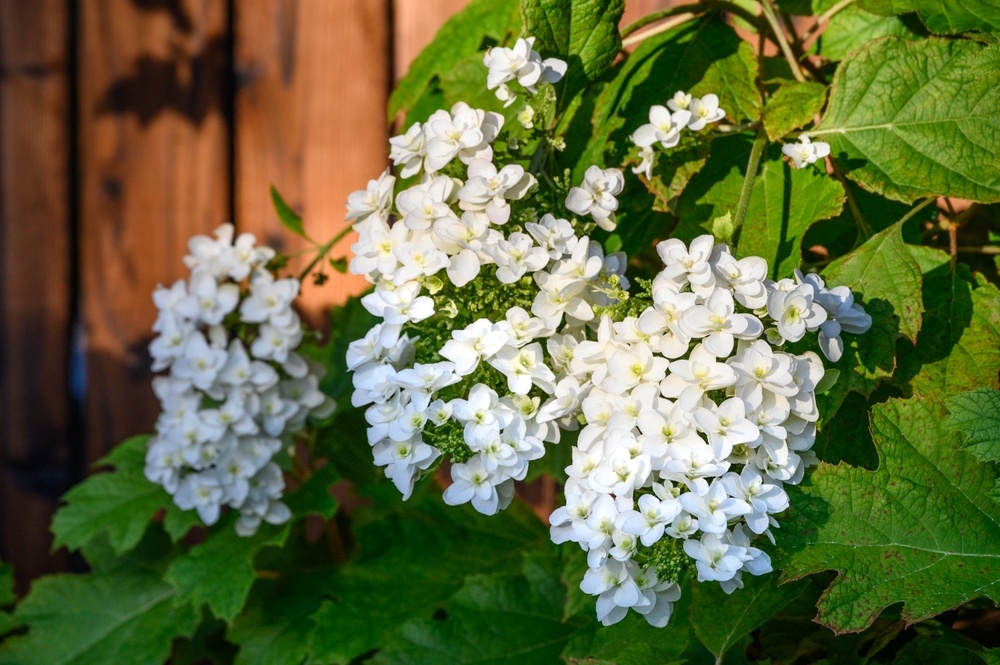
Yet another white flower that complements dark-leaved hostas is the deciduous hydrangea.
Many hydrangea varieties pair nicely with hostas, but the oakleaf has its appeal: it starts as a white bloom in June but often takes on pink hues later.
This hydrangea is hardy in zones 5–9, likes rich, acidic soil (pH of 5.0-6.5), and thrives in partial shade. However, it does get thirsty quickly, and mulch will be a lifesaver here.
Without fertilizer boosts, oakleaf hydrangeas can grow to 4–8 feet.
4. Astilbe
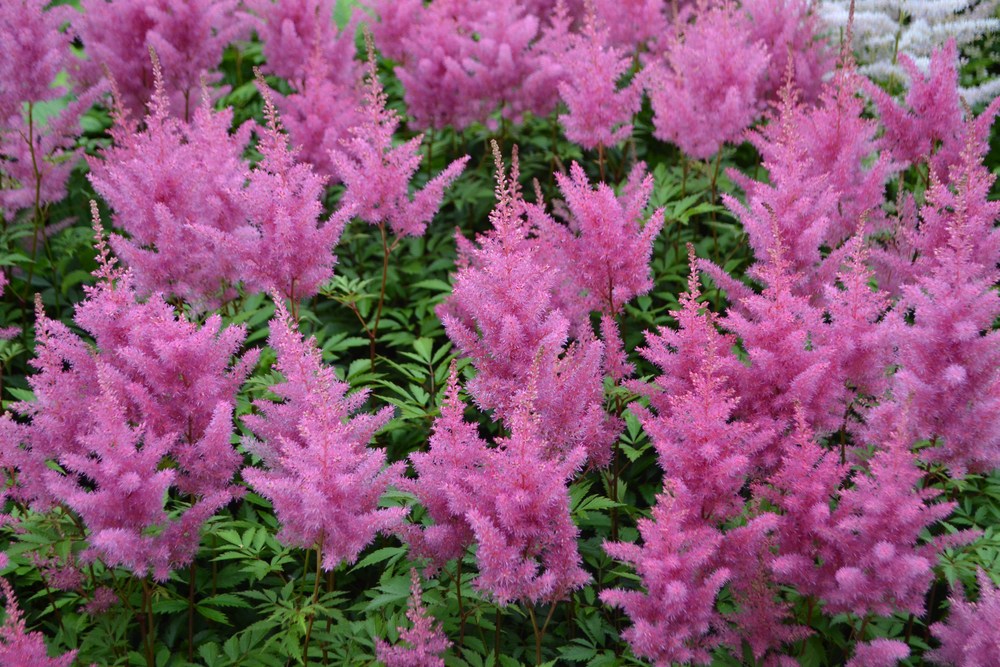
Astilbe’s feather-like blooms can add textural contrast to the smooth hosta leaves.
The plant needs part shade, loamy soil with a pH of 6.0, weekly waterings, and phosphorus boosters. All this effort pays off nicely with long-lasting spring and summer blooms.
Speaking of blooms, there are pink, white, red, and purple varieties. We’d recommend pink for light-green hostas and white for darker hostas.
In most cases, the astilbe grows 6–24 inches vertically and spreads easily. So, you’ll have to divide it every 3–5 years.
5. Coral Bells
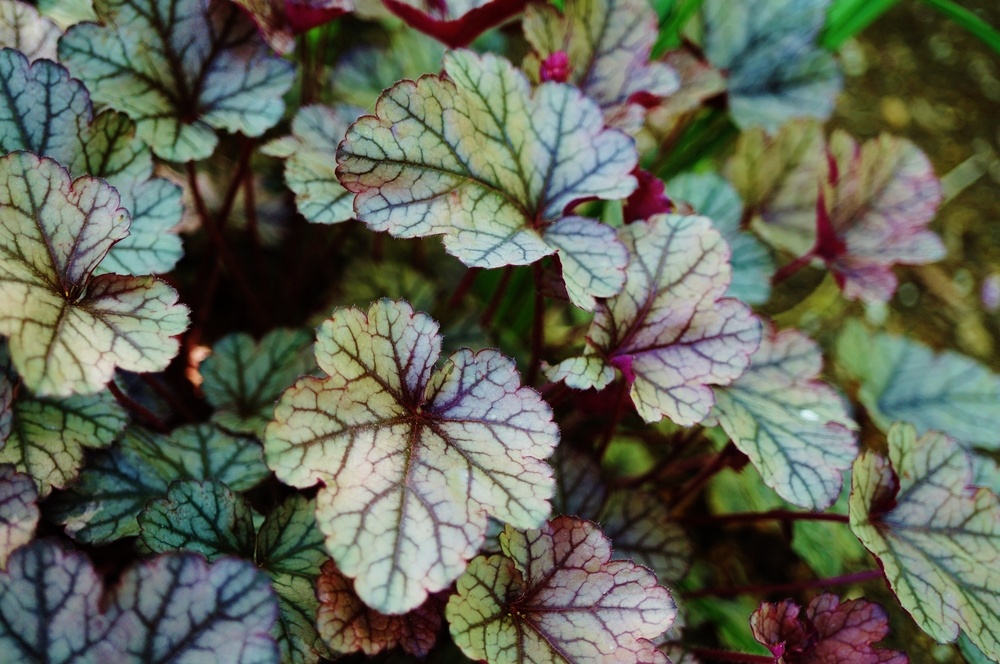
During spring and summer, coral bells show tiny, fragrant flowers, but these blooms aren’t the best part about this perennial. The star of the show is pastel-colored foliage.
If you just want a color pop in your shade garden, pair short coral bells with light green hostas, like the Guacamole variety. Meanwhile, blue hostas can create an edgy look.
All in all, established coral bells don’t need regular watering or maintenance. Just snip the flowers to redirect the plant’s energy to the foliage.
6. Evergold Carex

Taking a step back from spring blooms and pastel-colored leaves, let’s look at the evergold carex or the Japanese sedge.
Evergold carex is a perennial grass hardy in zones 5–9. What makes it unique is that its blades have dark green borders and thin silver-white stripes. These blades spread all over the place to form a 24-inch wide fountain-like tuft.
Just imagine the breeze shifting those blades near a solid green hosta!
Although this sedge is ornamental, it still has the trouble-free perk of plain grasses. Drench unestablished plants consistently, keep them out of intense sunlight, and you’ll be all set.
7. Spiderwort

Do you want a companion that’s both grassy and flowering? Let us introduce the spiderwort.
It’s perennial with strappy leaves (3 feet long!) and petite blue-purple wildflowers that open and close throughout the day.
You’ll start by planting spiderwort in spring. Opt for well-drained, humus-rich, and slightly acidic soil because you’ll be watering it at least once weekly.
As long as it gets a couple of hours of light every day, the plant will thrive and bloom during spring and summer.
8. Hardy Geranium
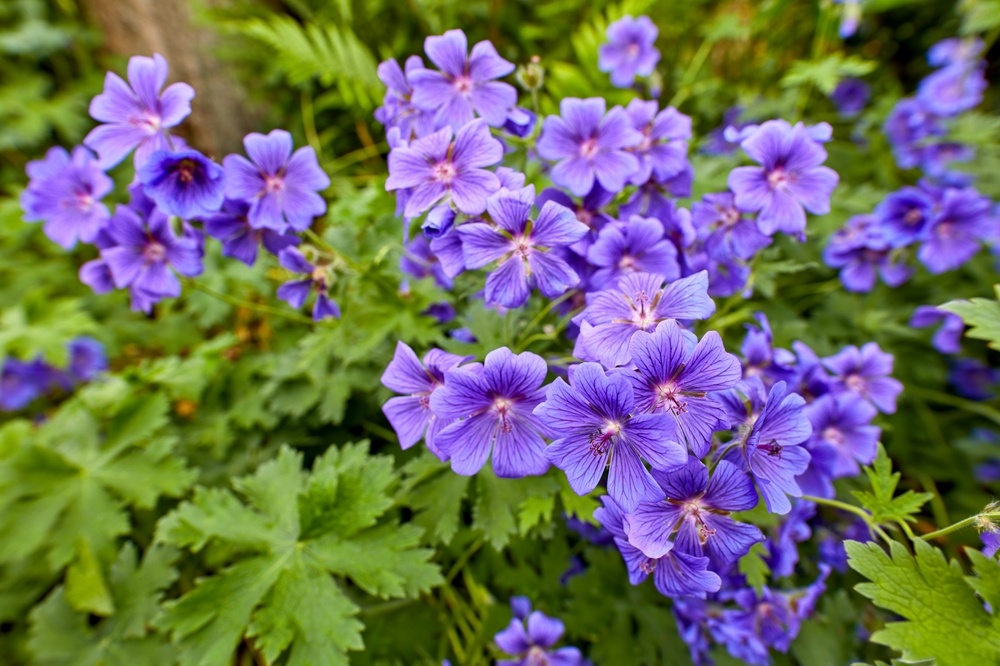
Caring for the summer-flowering hardy geranium is so easy that a beginner can do it without much help.
Plant it so that the crown is a bit above ground level, use well-drained soil, keep it slightly dry, and go on about your other garden duties. Once summer rolls in, you’ll see flowers popping up on a dense foliage carpet around 36 inches tall and 1–3 feet wide!
What colors will those flowers be? Well, there are around 300 varieties of hardy geraniums. So you can find it in white, sky-blue, violet, and magenta, to name a few. Our favorite hosta companion from the geranium species is the soft-pink sanguineum.
9. Bugleweed
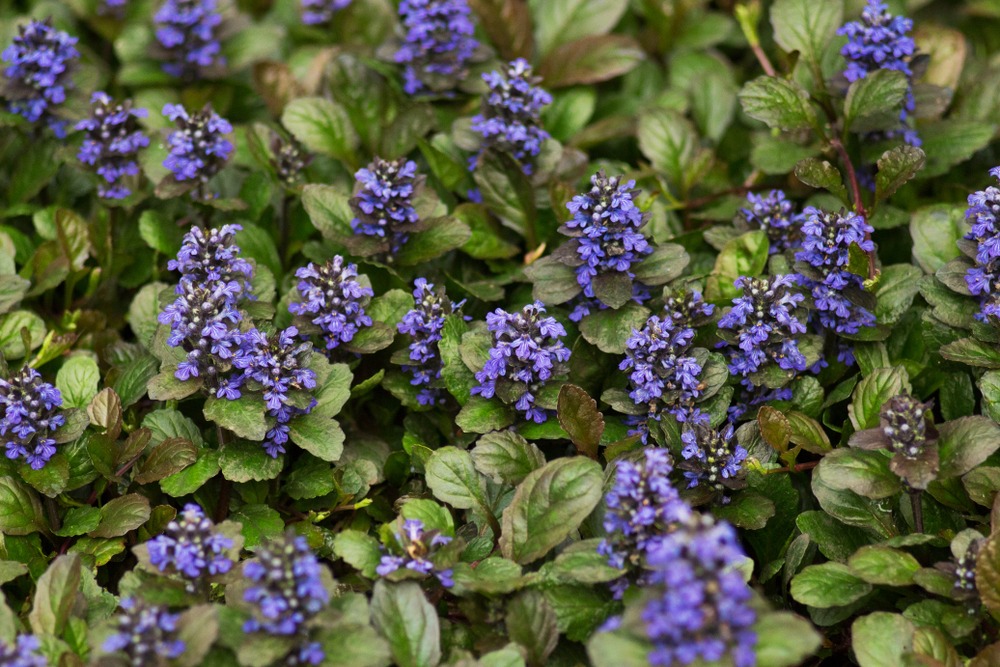
The fast-growing perennial bugleweed is a suitable companion for the ‘Golden Tiara’ and ‘ Sum and Substance’ varieties.
Why? Well, bugleweed’s color scheme balances the hostas’ golden and yellow hues. For one, the weed has dark green leaves. Plus, every spring, it completes the edgy look with blue-violet flowers.
It’s not a tall plant, though. It averages 6–9 inches. However, it does handle shade and slightly acidic soil well.
Just keep in mind that it’s an aggressive spreader that needs to be kept away from lawns.
10. Mondo Grass
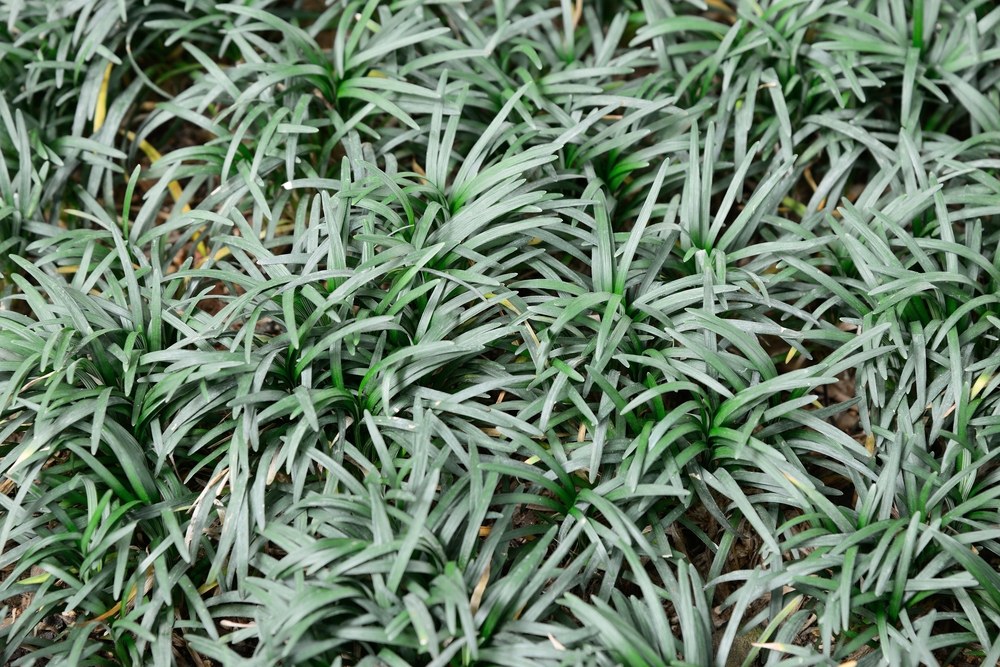
So bugleweed offers a dark color scheme that contrasts light-colored hostas. That’s all good to hear, but if you want to take things to the next level, consider mondo grass.
Technically, mondo grass is an evergreen 12-inch ground cover. However, the “green” is more of a purple-black. From a distance, it actually looks like a dense black clump sitting on the ground.
The cherry on top? That would be the soft-pink summer blooms.
Mondo grass doesn’t mind partial shade or acidic soil. It’s hardy in zones 6–10 but is a slow grower.
11. Foamflower
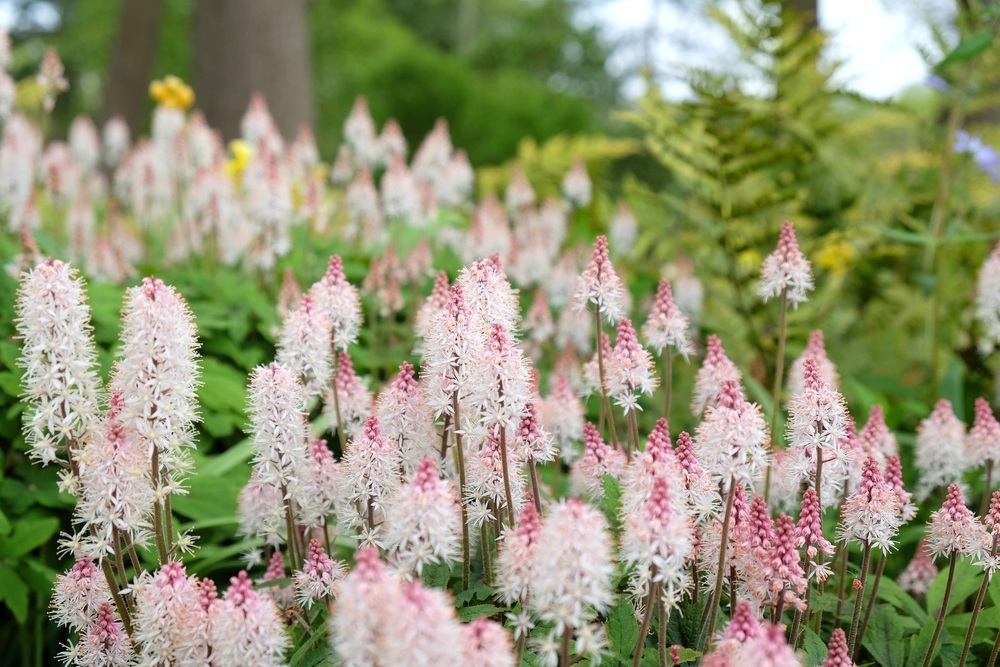
Despite its small size, foamflower can add textural interest to pretty much all hostas. It’s glossy, veined, spiked, and airy all at the same time. Yet, it never looks “too busy” from a distance.
It’s not the most low-maintenance groundcover, but it’s not hard to figure out, either. You’ll plant it in neutral to acidic humus-rich soil, protect it from harsh sunlight, and give it ample water during the summer.
Even after the spring blooms die out, the variegated foliage is going to keep the plant attractive. Plus, it gets along with other hosta companions, like coral bells and Solomon’s seal.
12. Baptisia

If you have blue hostas, use a ‘Lemon Meringue’ baptisia to add some contrast—not only because of the complementary colors but also because the lupine-like flowers keep the geometry and texture interesting.
The plant is low-maintenance, hardy in zones 4–8, and drought-tolerant. So, once you establish it in partial shade, you can leave it be and enjoy the blooms in April and May.
With minimal intervention, the plant can grow to 2–3 feet. However, the establishment phase can take around 3 years.
13. Spotted Dead Nettles
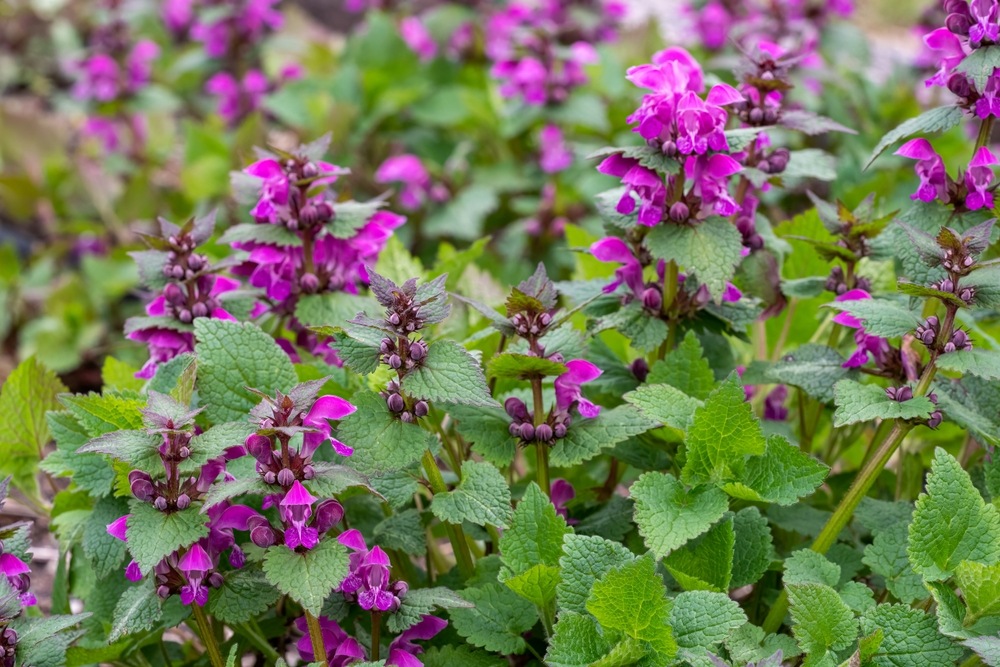
Another companion for blue hostas is the spotted henbit or dead nettle. It’s a shade-loving creeper with silvery foliage and a late spring to early summer bloom time.
Unlike baptisias, spotted henbits are fairly short and rarely grow over a foot tall. The “creeping” aspect is all about the plant’s spreading potential.
Although the pink varieties are quite a show-stopper, the white ones won’t steal the spotlight from blue hostas.
As a ground cover for a shaded garden, spotted dead nettles hardly require any watering.
14. Lady’s mantle
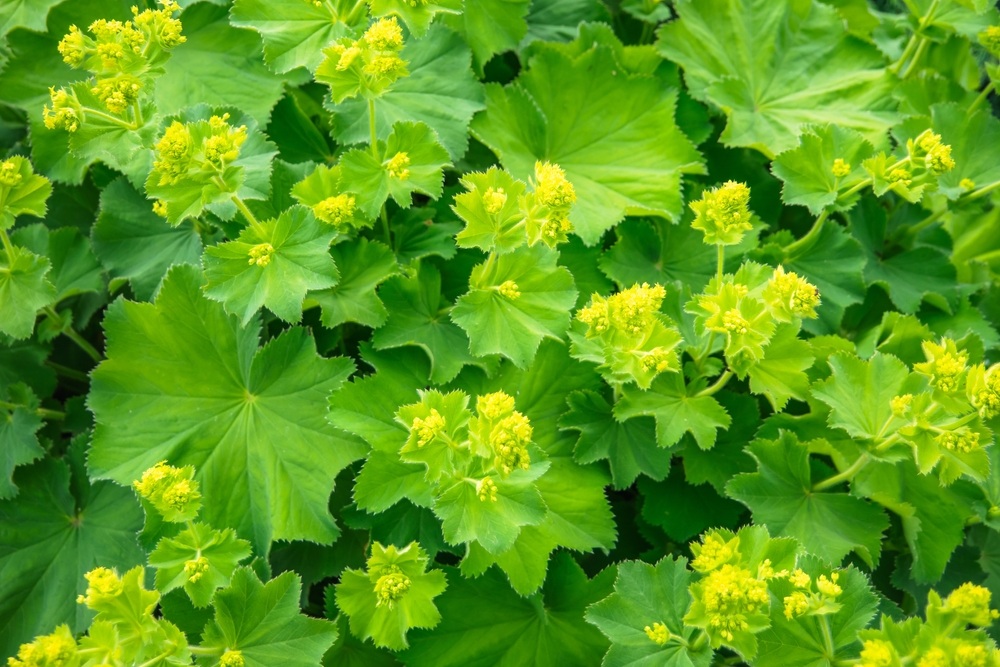
If your hostas already have a colorful companion, you can finish the look with something simple but with enough character to stand out.
We think this description fits the lady’s mantle like a glove!
Lady’s mantle plants have two standout features: the scallop-edged dark foliage and the yellow-green summer blooms. These flowers are more soft and downy than showy.
In terms of hardiness, the plant does well in zones 3b–8b, but prefers more water and shade in warmer areas.
15. Solomon’s Seal
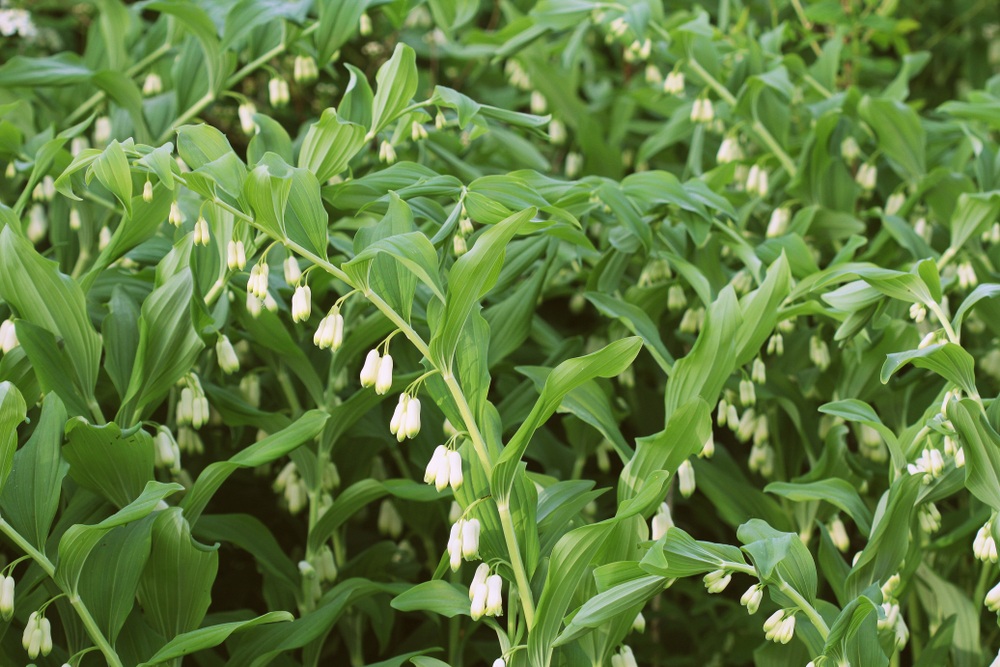
You don’t always need showy flowers to add a twist to a hosta bed; foliage will do the job, but it must be striking foliage. What’s a better example than the variegated Solomon’s seal plant?
Solomon’s seal is a woodland perennial that does best in zone 4 but still survives in zones 3–9 and grows around 1–2 feet tall.
It has spring blooms that come in pink, green, and white. However, the hype here is all about the variegated leaves that look like they were tipped with cream.
Ultimately, you shouldn’t have trouble growing Solomon’s seal in the same conditions as most hosta varieties.


